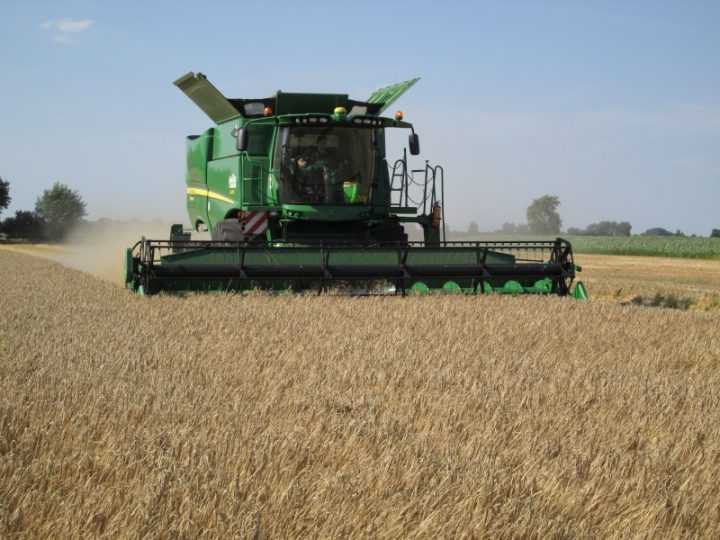COOKIES ON THE YOKOHAMA ATG SITE
We use cookies on this site to enhance your user experience. By clicking any link on this page, you are giving your consent for Yokohama ATG to set cookies.
August 31, 2017 << Back to Blog

August 31, 2017
The world population is constantly increasing, putting a lot of pressure on the unchanging arable land; to provide more output. This imbalance can only be matched through intensive farm mechanization. Equipment manufacturers are toiling hard to bring in machines that would help farmers produce more per acre. Tire technology plays a critical role to achieve this. A tire is responsible for translating high amount of machine power to the ground, and this contact with the ground is significant for the machine’s productivity. Heavier, faster and more effective machinery is setting newer challenges for tire design engineers. Leading tire manufacturers are trying to bring in continuous innovations. Varied factors have to be taken into consideration to provide the right tire, for the right application.
Rolling resistance directly impacts the fuel efficiency of the machinery. High fuel consumption is one of the major concerns for both equipment manufacturers as well as farmers. In addition to load and inflation pressure, other factors like diameter, width, construction, tread also have an effect on rolling resistance. It is essential to understand all these dimensions and their correlations with each other under various conditions, to ensure minimum rolling resistance and maximum fuel efficiency.
Traction is basically what keeps the machinery moving, because no matter how much horsepower you have; it is of no use if wheels are spinning with no ability to gain traction on the ground. Traction of a tire is generated by its tread; it establishes an interlocking cog-like connection with the ground and facilitates the transmission of all driving, braking and steering forces. Traction requirement differs in accordance to the application and terrain on which it is performed. A lot of engineering goes into tread compounding and designing to meet this requirement.
To reduce overall cycle time of operation, equipment manufacturers are bringing in machines which have excellent mobility on various surfaces like farmyards, roads and storage sites. This makes tread designing even more complex, and necessitates introduction of newer tread patterns which are equipped to provide excellent traction on all surfaces under all conditions.
Equipment manufacturers are bringing in heavier machines, putting a lot of burden on tire manufacturers to spread this incredible weight over the largest possible area to minimize compaction caused by these huge machines. Tire manufacturers are bringing in structural and compound innovation which improves the tire’s flotation characteristics and also makes it capable of working at lower pressures.
Today’s heavy, high-powered tractors, combines, tankers are rated for higher speeds, they travel greater distances between the fields. This trend draws attention to two major aspects –riding comfort and noise generation.
Road lope (bouncy ride) caused by the swaying and bouncing of a machine during road transport results in rider discomfort and decrease in productivity. To cope with this, tire manufacturers are reconstructing the tire’s sidewall, to dampen the swaying motion while travelling at higher speeds. Government is laying down strict rules and regulations on the noise levels created by farm machinery, which is necessitating tire designers to monitor the noise generated by the tire. Noise in tires is generated when air flows through the tread grooves as they come in and out of contact with the surface. Tire designers need to create a balance between the tread design noises and the traction requirement of the applications.
One of the biggest concerns of a farmer, when it comes to tires for his equipment, is that of durability. Once in field, he doesn’t want to stop its crucial operations, because of tire damage and failures. To ensure longer life, tires are constructed with special tread compounds, stronger casing and tread sculpture. Steel reinforcement and stubble guard compound have become absolute necessary while working in the field.
All these critical factors and many more together help in developing the best tire for a specific machine. To meet the changing needs manufacturers are continuously innovating and moving beyond conventional indoor evaluations. Extensive field testing is performed to understand the actual field environment. With its years of experience and expertise Alliance provides an extensive range of farm tires for every application carried on the field. Our tires are designed with the right mix of critical parameters to provide exceptional performance and increase the efficiency of the farm machinery.
For more information visit Alliance agricultural tires
– VL Jojan
01-Dec-2023
30-Oct-2023
16-Oct-2023
10-Oct-2023
04-Oct-2023
01-Sep-2023